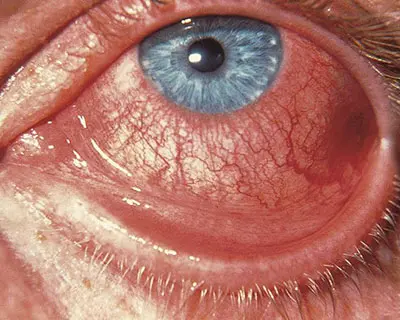Bacterial eye infections are a common yet serious condition that can affect individuals of all ages. These infections are typically caused by harmful bacteria entering the eye, leading to inflammation, discomfort, and potential complications if untreated. This comprehensive guide provides essential information about bacterial eye infections, their causes, symptoms, treatment options, and prevention strategies.

What Are Bacterial Eye Infections?
A bacterial eye infection occurs when bacteria invade the eye or surrounding tissues, causing inflammation and other symptoms. These infections can affect various parts of the eye, including the conjunctiva, cornea, or eyelids. Common bacterial pathogens responsible for eye infections include:
- Staphylococcus aureus
- Streptococcus pneumoniae
- Haemophilus influenzae
- Pseudomonas aeruginosa
Timely diagnosis and treatment are crucial to prevent complications such as vision loss or the spread of infection.
Common Types of Bacterial Eye Infections
1. Conjunctivitis (Pink Eye)
Bacterial conjunctivitis is characterized by redness, swelling, and a thick discharge from the eye. It is highly contagious and often spreads through direct contact with infected individuals or contaminated surfaces.
2. Keratitis
Keratitis refers to inflammation of the cornea caused by bacterial infection. Symptoms include pain, blurred vision, light sensitivity, and excessive tearing. Improper contact lens hygiene is a common risk factor.
3. Blepharitis
Blepharitis involves inflammation of the eyelids, often due to bacterial overgrowth near the lash line. Symptoms include itching, redness, and crusting around the eyes.
4. Endophthalmitis
This severe, sight-threatening condition results from bacterial infection inside the eye, often following surgery, trauma, or an injection.
Symptoms of Bacterial Eye Infections
Recognizing the symptoms of bacterial eye infections can help in seeking prompt medical attention. Common symptoms include:
- Redness and swelling
- Pain or discomfort in the eye
- Blurred or impaired vision
- Yellow or green discharge
- Crusting around the eyes
- Sensitivity to light (photophobia)
- Excessive tearing or dryness
If symptoms persist or worsen, consult an eye care professional immediately.
Causes and Risk Factors
Causes
Bacterial eye infections are typically caused by the following:
- Poor hygiene, such as touching the eyes with unwashed hands
- Contaminated contact lenses or solutions
- Trauma or injury to the eye
- Post-surgical complications
- Spread from other infections in the body
Risk Factors
Certain factors increase the likelihood of developing bacterial eye infections:
- Use of contact lenses
- Weakened immune system
- Diabetes
- Exposure to contaminated water
- Close contact with infected individuals
Diagnosis of Bacterial Eye Infections
An accurate diagnosis requires a thorough examination by an eye care specialist. Diagnostic steps may include:
- Patient History: Discussing symptoms and recent activities.
- Physical Examination: Inspecting the eye for redness, discharge, and swelling.
- Laboratory Tests: Analyzing a sample of discharge or tissue to identify the bacterial strain.
Treatment Options
1. Antibiotics
Antibiotic eye drops, ointments, or oral medications are the primary treatments for bacterial eye infections. Commonly prescribed antibiotics include:
- Ciprofloxacin
- Erythromycin
- Tobramycin
2. Warm Compresses
Applying warm compresses can help alleviate discomfort and reduce swelling, especially in conditions like blepharitis.
3. Proper Hygiene
Maintaining good hygiene, such as cleaning the eyelids and avoiding eye rubbing, is essential for recovery.
4. Surgical Intervention
In severe cases, such as endophthalmitis, surgical procedures like vitrectomy may be necessary to remove infected tissue.
Prevention Strategies
Preventing bacterial eye infections involves practicing proper hygiene and taking necessary precautions:
- Wash hands frequently with soap and water.
- Avoid touching or rubbing your eyes.
- Follow proper contact lens hygiene, including regular cleaning and replacement.
- Use protective eyewear during activities that pose a risk of eye injury.
- Avoid sharing personal items like towels or cosmetics.
- Seek prompt treatment for any eye injuries or irritation.
Complications of Untreated Infections
Untreated bacterial eye infections can lead to serious complications, including:
- Permanent vision loss
- Corneal scarring
- Spread of infection to other parts of the body
Early intervention and adherence to prescribed treatments are vital to avoid these outcomes.
When to See a Doctor
Seek medical attention if you experience:
- Persistent or worsening symptoms
- Severe pain or vision loss
- Recurring infections
- Discharge that doesn’t improve with basic hygiene
Bacterial eye infections, though common, can lead to significant discomfort and complications if left untreated. By understanding the causes, symptoms, and prevention strategies, individuals can protect their eye health effectively. Always consult an eye care professional for accurate diagnosis and timely treatment to preserve your vision.

